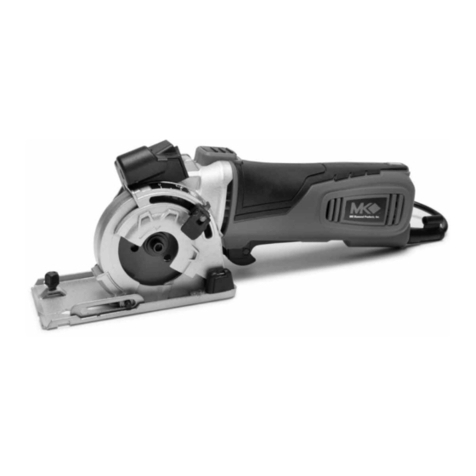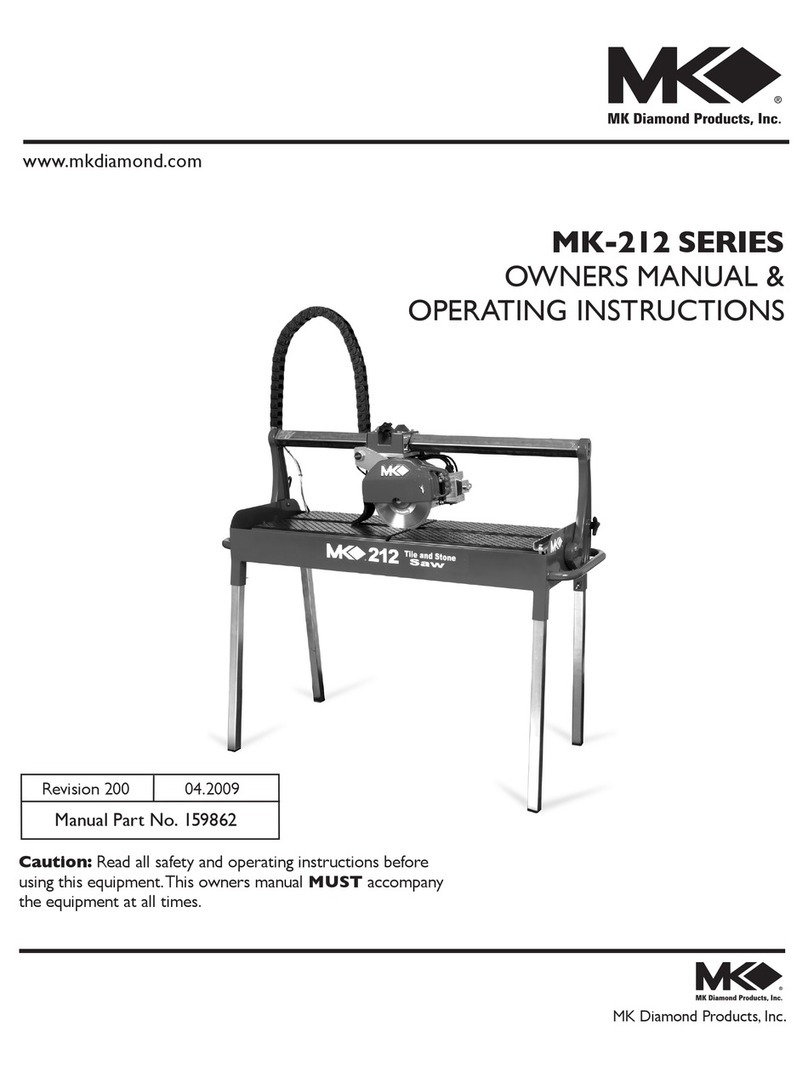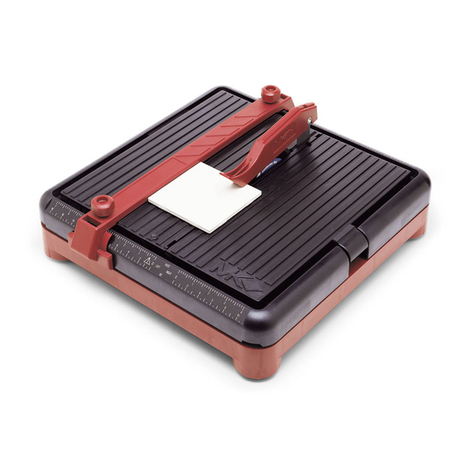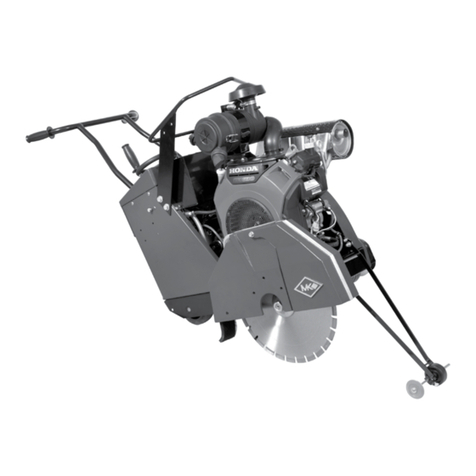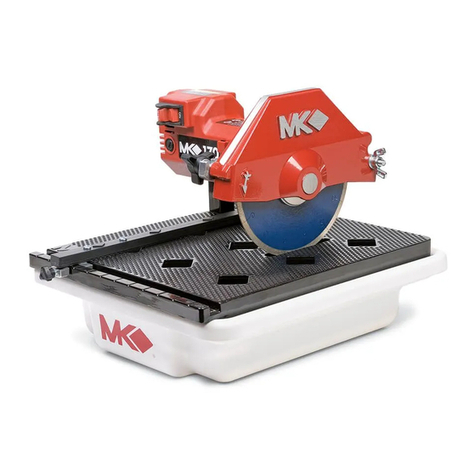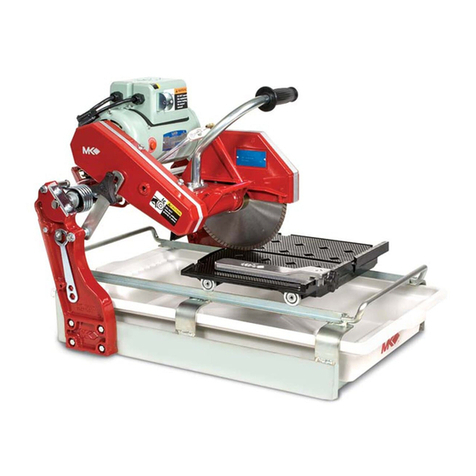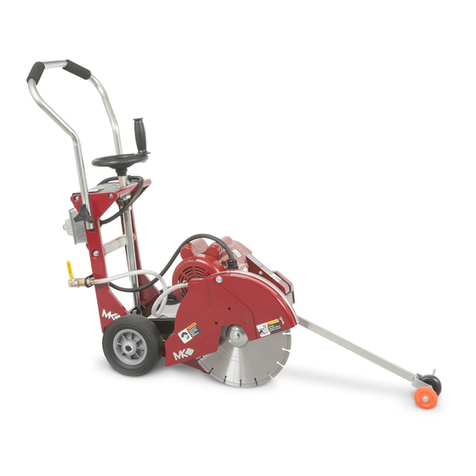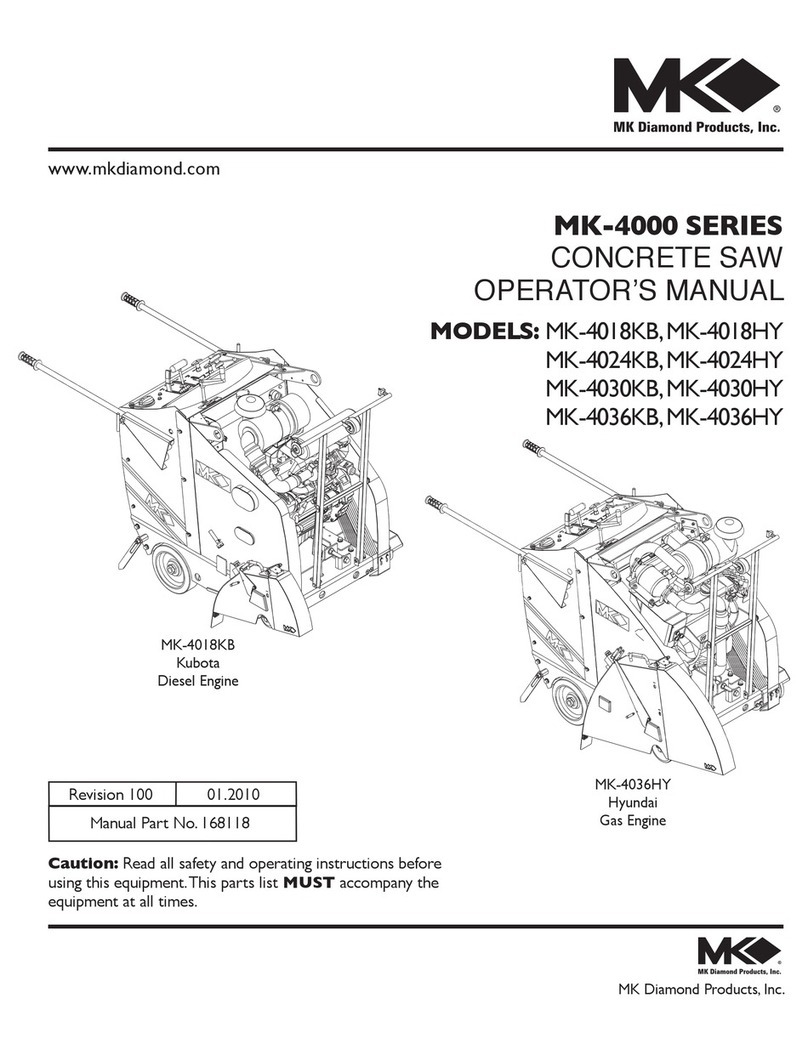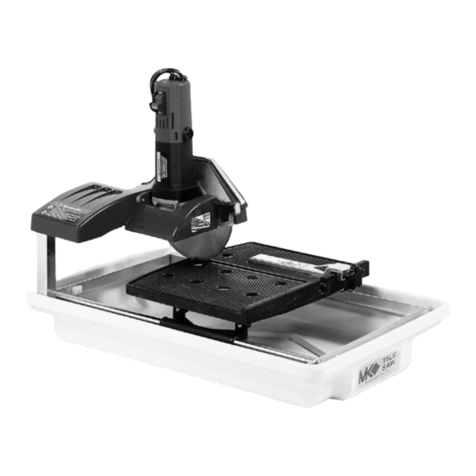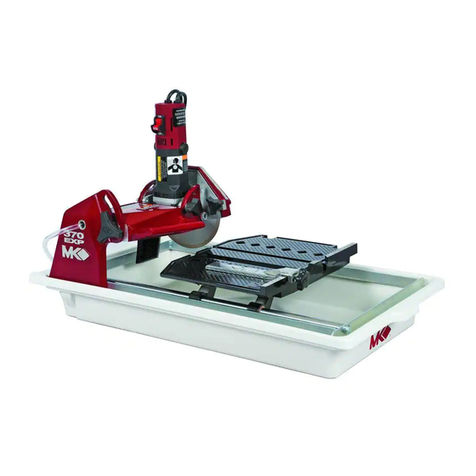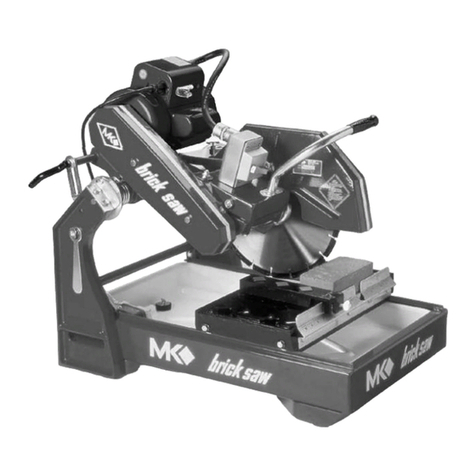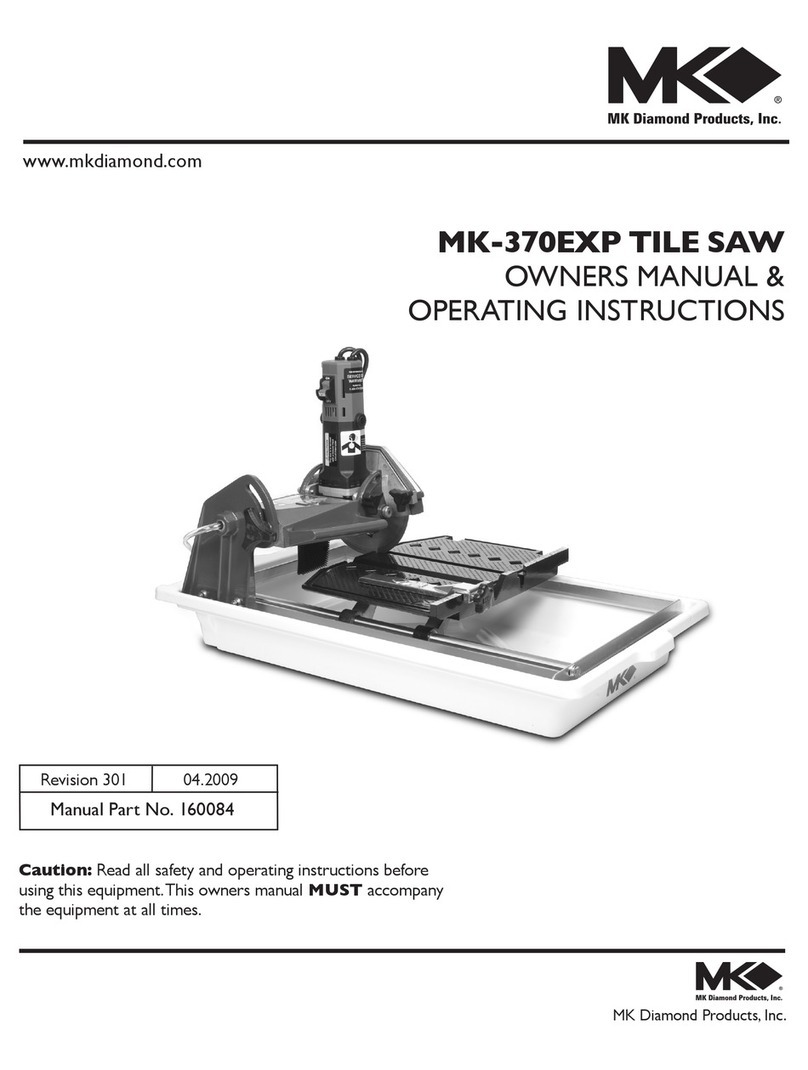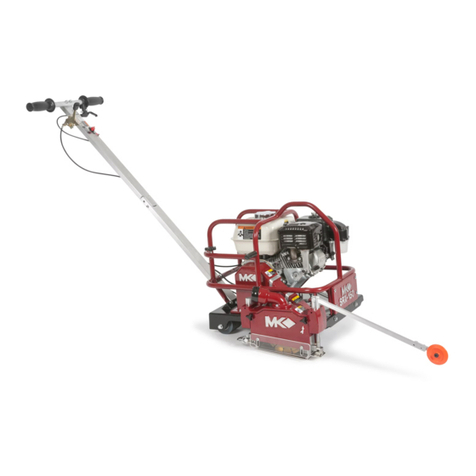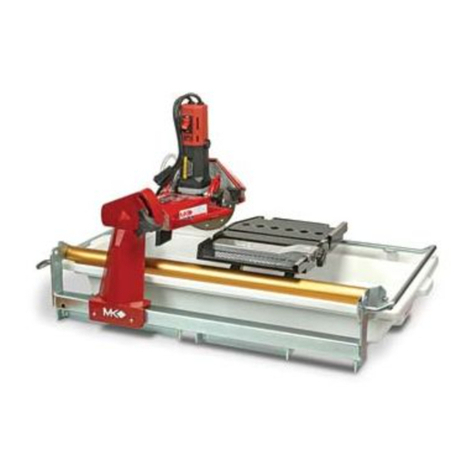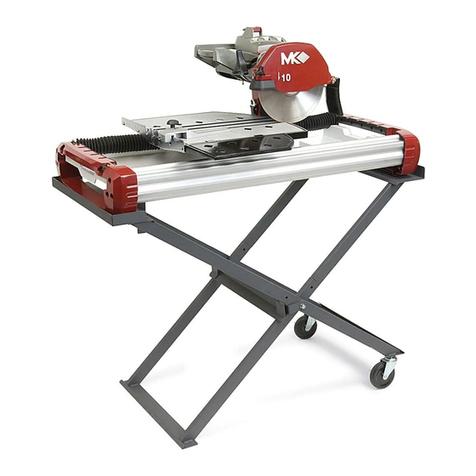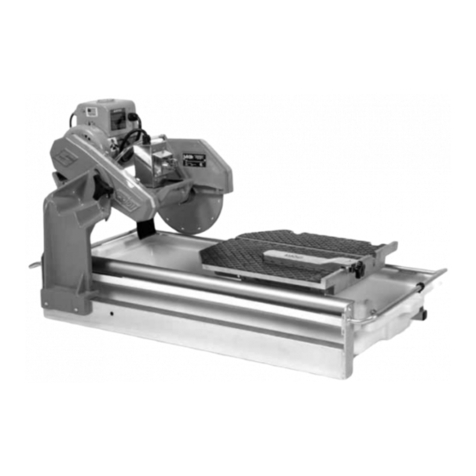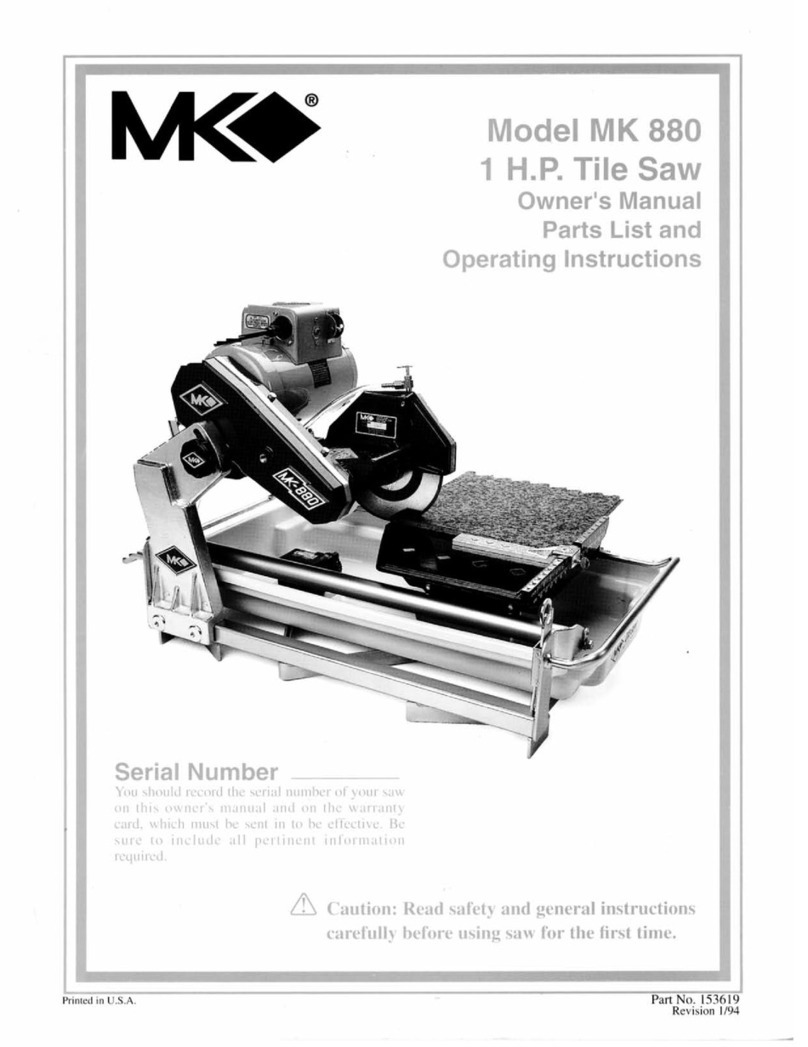
- 2 -
Need It. Rent It!
Sawing and drilling generates dust. Excessive airborne particles may cause irritation to eyes, skin and respiratory tract. To avoid breathing
impairment, always employ dust controls and protection suitable to the material being sawed or drilled; See OSHA (29 CFR Part 191 0.1200).
Diamond Blades improperly used are dangerous. Comply with American National Standards Institute Safety Code, B7.1 and, Occupational Safety
and Health Act covering Speed, Safety Guards, Flanges, Mounting Procedures, General Operating Rules, Handling, Storage and General Machine
Conditions.
CALIFORNIA PROPOSITION 65 MESSAGES:
Some dust created by power sanding, sawing, grinding, drilling, and other construction activities contain chemicals known [to the State of California]
to cause cancer, birth defects or other reproductive harm. Some examples of these chemicals are:
• Lead, from lead-based paints
• Crystalline silica, from bricks and cement and other masonry products and
• Arsenic and chromium, from chemically treated lumber
Your risk from these exposures varies depending on how often you do this type of work. To reduce your exposure to these chemicals, work in a well-
ventilated area, and work with approved safety equipment, such as those dust masks that are specially designed to filter out microscopic particles.
ELECTRICAL REQUIREMENTS AND GROUNDING INSTRUCTIONS:
In order to prevent potential electrical shock and injury, the following electrical safety precautions and symbols should be followed at all times!
In case of a malfunction or breakdown, grounding provides a path of least resistance
for electric current to reduce the risk of electric shock.
This tool is equipped with an electric cord having an equipment-grounding conductor and a grounding plug. The plug must be plugged into a
matching outlet that is properly installed and grounded in accordance with all local codes and ordinances.
• Do not modify the plug provided - if it will not fit the outlet; have the proper outlet installed by a qualified electrician
• Improper connections of the equipment-grounding conductor can result in a risk of electric shock. The equipment-grounding conductor is
the insulated conductor that has an outer surface that is green, with or without yellow stripes. If repair or replacement of the electric cord or plug is
necessary, do not connect the equipment-grounding conductor to a live terminal
• Check with a qualified electrician or service personnel if the grounding instructions are not completely understood, or if in doubt as to
whether the tool is properly grounded
• Use only 3-wire extension cords that have 3-prong grounding plugs and 3-pole receptacles that accept the tool's plug
• Repair or replace a damaged or worn cord immediately
A Ground Fault Circuit Interrupter (GFCI) should be provided on the circuit(s) or outlet(s) to be used for the Saw. Receptacles are available having
built-in GFCI protections and may be used for this measure of safety.
When using an extension cord, the GFCI should be installed closest to the power source, followed by the extension cord and lastly, the saw.
To avoid the possibility of the appliance plug or receptacle getting wet, position the saw to one side of a wall mounted receptacle. This will prevent
water from dripping onto the receptacle or plug. A "drip loop," should be arranged by the user to properly position the power cord relative to the
power source. The "drip loop" is that part of the cord below the level of the receptacle, or the connector, if an extension cord is used. This method of
positioning the cord prevents the travel of water along the power cord and coming in contact with the receptacle.
If the plug or receptacle gets wet, DO NOT unplug the cord. Disconnect the fuse or circuit breaker that supplies power to the tool. Then unplug and
examine for presence of water in the receptacle.
Use only extensions cords that are intended for outdoor use. These extension cords are identified by a marking "Acceptable for use with outdoor
appliances; store indoors while not in use." Use only extension cords having an electrical rating not less than the rating of the product. Do not use
damaged extension cords. Examine extension cords before using and replace if damaged. Do not abuse extension cords and do not yank on any
cord to disconnect. Keep cords away from heat and sharp edges. Always disconnect the extension cord from the receptacle before disconnection the
product form the extension cord.
To reduce the risk of electrocution, keep all connections dry and off the ground. Do not touch the plug with wet hands.
To choose the proper extension cord,
• Locate the length of extension cord needed in the table below.
• Once the proper length is found, move down the column to obtain the correct AWG size required for that length of extension cord.
Extension Cord Minimum Gage for Length
Volts Total Length of Cord in Feet
120V 25 ft. 50 ft. 100 ft 150 ft.
AWG AWG AWG AWG
18 16 16 14
LOCK OUT: To prevent accidental starting, and to help ensure your workshop is "Kidproof," this saw is provided with a means to lockout the motor
ON/OFF switch. The ON/OFF switch is provided with a Lockout Eye that can be used in conjunction with a padlock to prevent starting the

